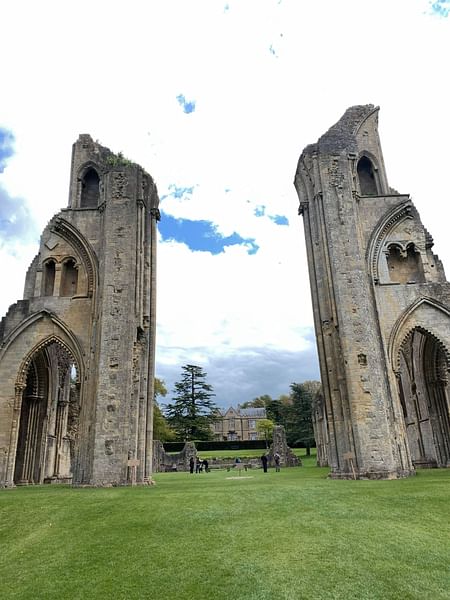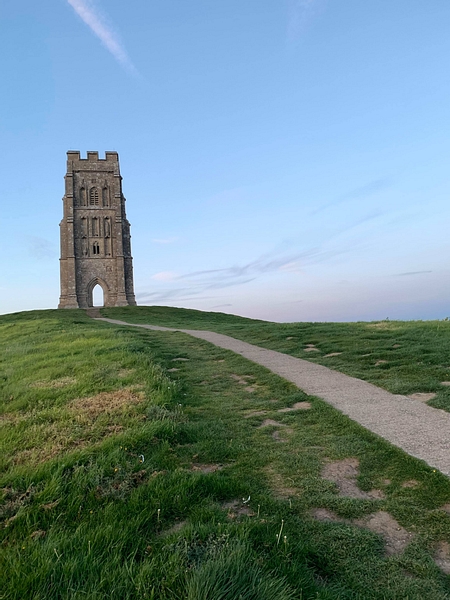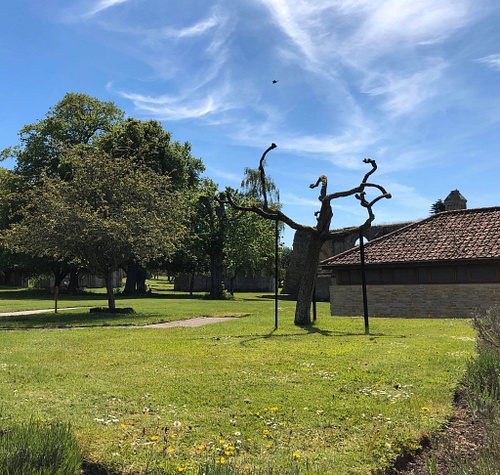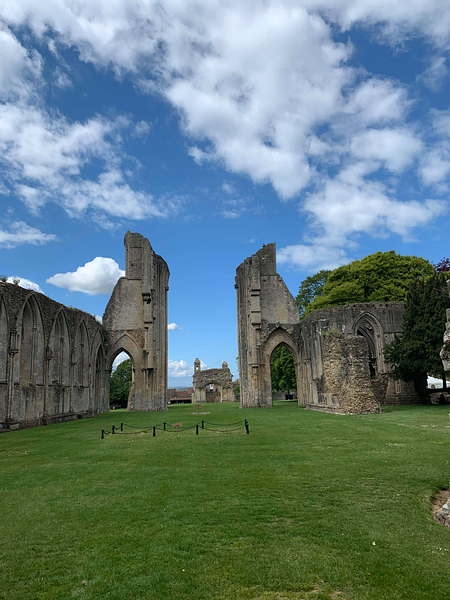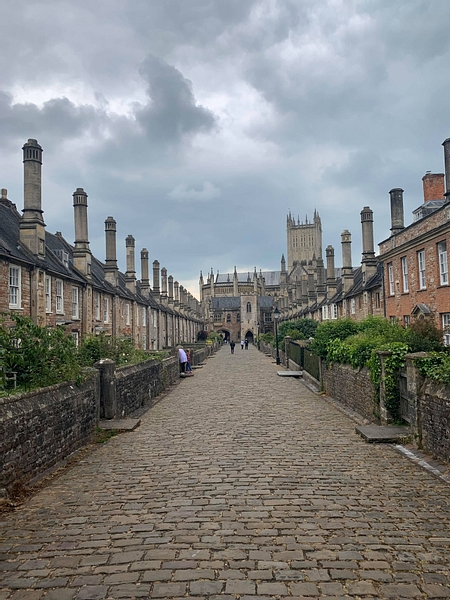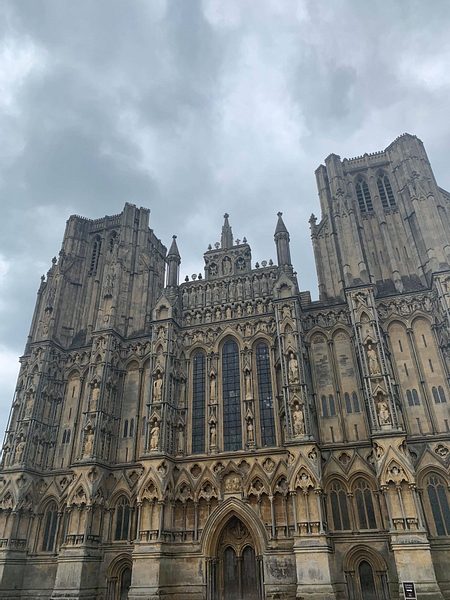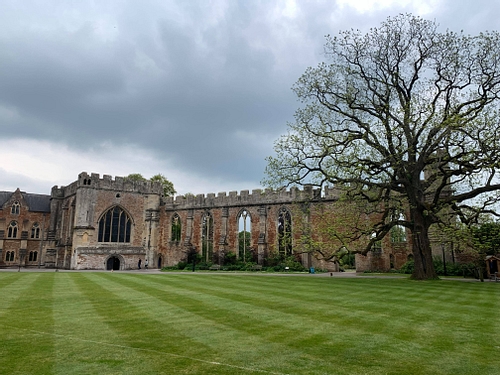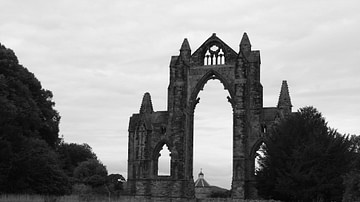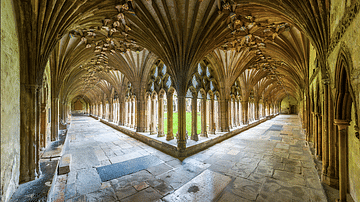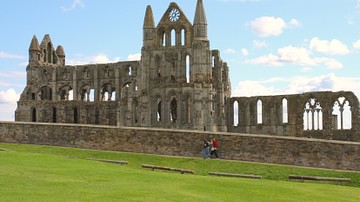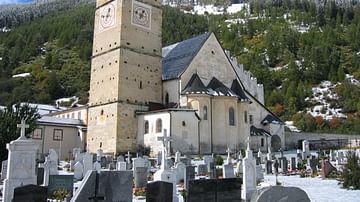The Somerset Levels is an area of the British Isles that captivates visitors with its stunning natural landscape and historical sites and monuments. Glastonbury is famous for its apple orchards and music festival. It is one of the most visited small towns on the Levels, but it is also recommended for anyone interested in history and legends about England's ancient past.
Glastonbury is a town steeped in myths and legends. Theories about the founding of the great abbey and connections to the Arthurian legends and the land of Avalon are too numerous to count. The mysterious and sacred aspects of Glastonbury attract visitors and pilgrims from all over the world who seek forgotten lands and wish to drink from sacred springs. However, if you are not interested in this aspect of Glastonbury, the town also has much to offer to those interested in “real” historical sites and stories. Besides, who would not want to walk along a street that feels like entering the world of Harry Potter? There are many historical buildings on High Street - one of the main streets in the little town - including The George and the Pilgrim's Hotel, which was built in the late 15th century CE to accommodate pilgrims traveling to visit the abbey and still functions today as a restaurant and hotel.

The Tor
The most visited and distinctive landmark in Glastonbury is the Glastonbury Tor. The Tor consists of a remaining church tower from the Church of St. Michael located on top of a hill visible from a long distance as it dominates the otherwise flat landscape. There are many theories and myths about what practices could have taken place on this hill in the distant past, including that it is linked to Druidry, fairy castles, and Avalon from the legends of King Arthur. Avalon is the island Arthur was taken to after the battle of Camlann, and the name Avalon is believed to translate to the island of the apple or fruit trees. Glastonbury is also known as the Island of Glass, and it is suggested that the hill would have been an island before the Somerset Levels were drained.
As the Somerset Levels are now dominated by apple orchards, it is not hard to understand why many people from the Middle Ages until today have drawn a strong connection between the veiled and mysterious land of Avalon and Glastonbury. This mythical connection is deeply rooted in Glastonbury's history, and this is the reason many pilgrims visited the town and especially the Tor for many centuries. However, the historic validation of the Arthurian legends is more problematic.
What can be historically proven is Glastonbury's function as a monastic site, which faced hardship during the Protestant Reformation of the English church in the 16th century CE.
The tower now standing on top of the Tor, known as St. Michael's Tower, is the remains of the stone church constructed in the 14th century CE. Archaeological finds and Celtic sagas show that this stone church was built on top of a previous wooden church and that the Christian connection to the hill continued for many centuries. The discovery of a wheel-headed cross establishes a Christian presence in the 11th century CE. Evidence of monastic activity on the hill can also be found in a charter written by Henry III of England (1216-1272 CE) in 1234 CE which permitted a fair to be held “at the monastery of St Michael on the Tor.” The last abbot of Glastonbury Abbey, Richard Whiting (1461-1539 CE), together with two of his monks, was hanged, drawn, and quartered here in 1539 CE when the abbey was suppressed during the reign of King Henry VIII of England (r. 1509-1547 CE) and his Dissolution of the Monasteries.
History or legends may draw you to visit the Tor, but a large part of what makes the site so special is the walk the visitor will take in green and vibrant natural surroundings. The hike up the hill is quite steep but not too exhausting, and upon reaching the top and experiencing the magnificent view of the town and the Somerset Levels, it is not difficult to understand why so many people have felt a deep connection to this place throughout history. It is also recommended to explore the area a little more and possibly visit the apple orchards on the other side of the hill (if you take the normal route from the town) that are especially enchanting when the apple trees blossom.
St. Margaret's Chapel & Royal Magdalene Almshouses
Every visitor to Glastonbury should visit St. Margaret's Chapel and Royal Magdalene Almshouses and spend a few quiet moments in the beautiful garden. The site can be entered through a little side street behind 38 Magdalene Street. Entry is free; however, donations are encouraged. The oldest buildings date from c. 1250 CE and were constructed as a hospital for the poor, tired, and hungry pilgrims who had traveled far to visit the shrines and relics in the abbey across the street.
St. Margaret's Chapel was originally built as a hospital in the 1070s CE, but the preserved building was constructed in 1444 CE. The now crooked but magnificently charming chapel was dedicated to St. Margaret (1045-1093 CE), who was a Saxon Princess of English royal blood and later a Scottish Queen known for her Catholic piety and care for the poor.
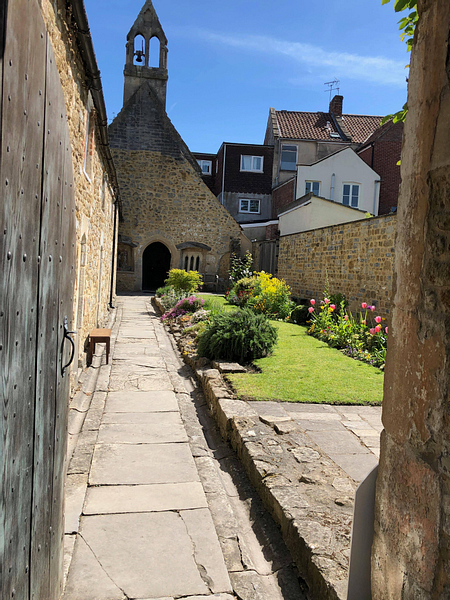
One of the almshouses has been decorated and furnished to look as it might have in the early 20th century CE. The site is an oasis of peace, and with such a long history of caretaking and healing, it is a great place to spend a few minutes in silence for reflection and deep breaths. The chapel is still a pilgrimage site for people from varying religious and spiritual practices, so respectable behavior on this historic ground is important.
Glastonbury Abbey
The main site to visit in Glastonbury is the Abbey, which in its heyday was one of the most important churches in England. The founding of the church is unknown and therefore steeped in mystery connected to the legend of Joseph of Arimathea. Joseph of Arimathea is believed to have been a rich merchant and disciple of Jesus who brought Christianity to Britain after becoming a missionary. On his travels, he brought a pilgrimage staff, and when he placed it on one of the hills in Glastonbury, it took root and became a blossoming thorn, which Joseph saw as a sign for where he was to build his church. This supposedly happened in 63 CE when he was visiting the area with eleven followers, and they were given land by the legendary King Arvirargus for building the first church.
The Glastonbury Thorn is still considered a sacred tree, and the original tree has been propagated many times. One tree is standing at the original spot of the “Sacred Thorn” at Wearyall Hill, though unfortunately it was deliberately damaged in 2010 CE and removed in 2019 CE. Some of its sister trees are standing at different sites in the town, including one on the grounds of Glastonbury Abbey. These thorns are a special variety of hawthorn that blossoms twice a year (on Christmas Day and during Easter). It is a tradition for one of the schoolchildren in town to cut a flowering branch of one of these sacred thorns every Christmas and send it to the Queen for decorating her Christmas breakfast table.
The story of Joseph of Arimathea is hard to prove. When the Anglo-Saxons arrived in 658 CE, there was already a smaller church building standing where the abbey ruins stand today. Its history was already so ancient that the local community did not know who the original builders were. The abbey came under direct papal control during the reign of King Ine of Wessex (688-726 CE) but preserved its strong Celtic roots. From the 10th century CE, the abbey's importance increased after being brought under Benedictine rule. St. Dunstan (l. 909-988 CE, abbot at Glastonbury between 940-957 CE), re-established the monastery after the Viking raids which had affected much of the society in Britain and he transformed the church into an important literary center. The abbey became so wealthy, second only to Westminster, that a popular saying stated: “If the Abbot of Glastonbury could marry the Abbess of Shaftsbury, they would have more land than the king of England."
Glastonbury's connection to Avalon and the legends of King Arthur also increased the importance of the abbey as a pilgrimage site and hence its wealth. You can visit the site where the monks supposedly discovered Arthur and his wife Guinevere's burial site in 1191 CE. According to the story, Arthur and Guinevere were later reburied under the main altar by King Edward I of England (r. 1272-1307 CE) and Queen Eleanor (1246-1290 CE) in 1278 CE before the site disappeared during King Henry VIII's Dissolution of the Monasteries in 1539 CE. Today there is no way of proving that the remains of the legendary king ever rested here, but the myth is nonetheless an important part of the abbey's history.
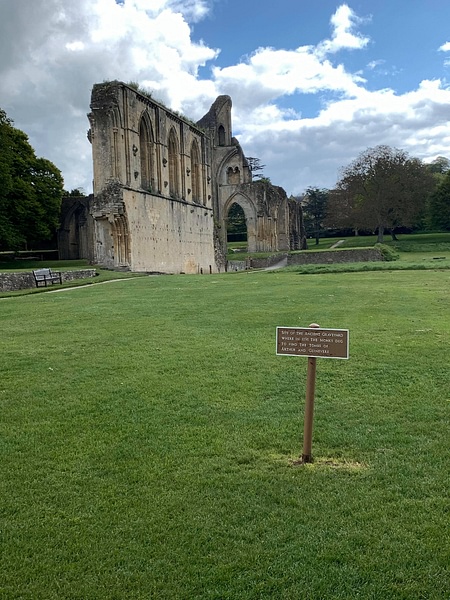
Today the ruins of the abbey are remains from the Great Church, which was built after a fire destroyed the old church in 1184 CE. The first construction you will see is the Lady Chapel, which highlights the site's long connection to the celebration of the Virgin Mary. According to tradition, there used to be a wooden church where the Lady Chapel now stands, and this was the first church and shrine in England dedicated to her.
When the fire ruined the old church, supposedly only a wooden statue of Mary seated on a throne while holding the baby Jesus Christ survived. As with the remains of Arthur and Guinevere, the statue disappeared as King Henry VIII's men visited the medieval monastery and claimed its riches for the king, and its fate is not known.
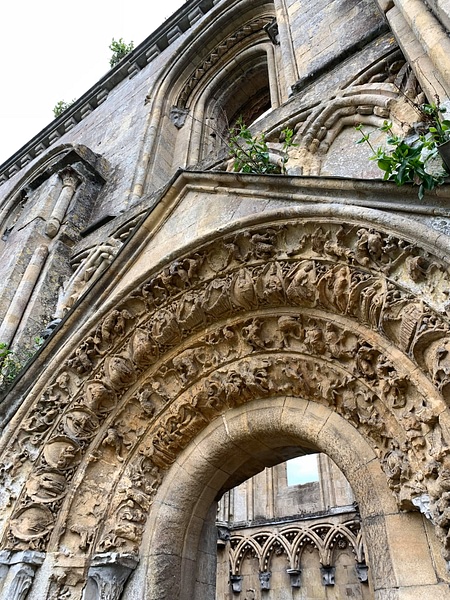
In the 13th century CE, the chapel was linked to the Abbey Church when the Galilee Chapel was built. The carved doorway entry to the Lady Chapel is worth some minutes of appreciation. Delicately carved images on the doorway depict the life of the Virgin Mary, and the inside of the chapel would have been richly and colorfully decorated, too. Envisioning how it might have looked before its destruction, it is easy to see why so many pilgrims traveled far to visit such an ancient and splendid sanctuary.
Around 1500 CE, a crypt was also constructed under the Lady Chapel and became known as St. Joseph's Crypt. The crypt was a site for special burial and veneration of relics. There is also a sacred well located on this level, and both can be visited as the building has been conserved. The well and crypt were closely linked to the cult of Joseph of Arimathea, and miracles supposedly happened here in the early 16th century CE when people suffering from lameness, plague, and childhood disease recovered after visiting.
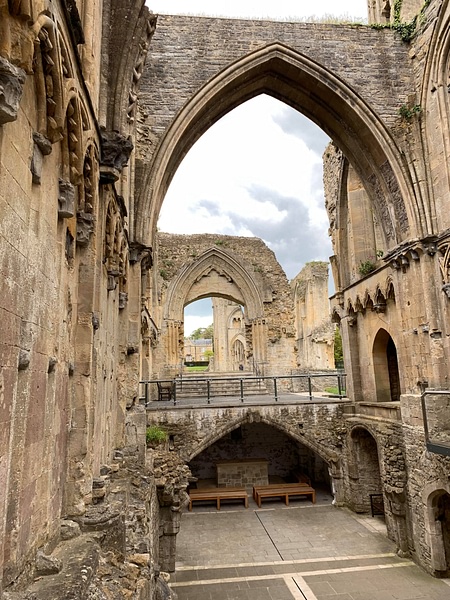
Next to the Lady Chapel, you can visit Arthur and Guinevere's supposed burial site, which you will see on your way to the Abbot's Kitchen. The Abbot's Kitchen is the best-preserved building on the estate, and it has been described as "one of the best-preserved medieval kitchens in Europe". This is mainly due to the fact that the roof on this building was not made of lead, which was a sought-after material. Consequently, when King Henry VIII's men came to confiscate the riches of the monastery and church, they did not demolish this building as they did with the other lead-covered buildings, which soon fell into a state of disrepair. The building was later used by Flemish weavers and as a stable.
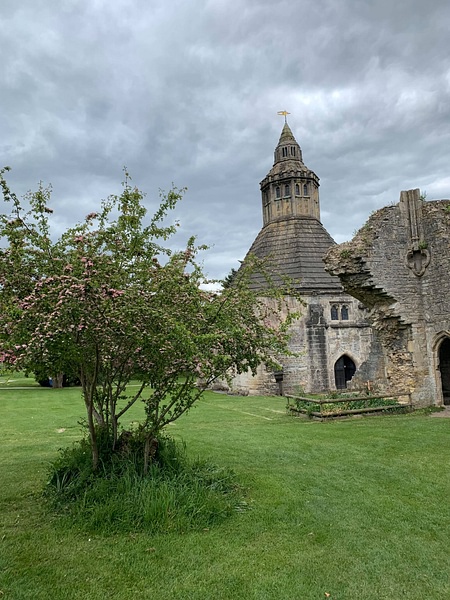
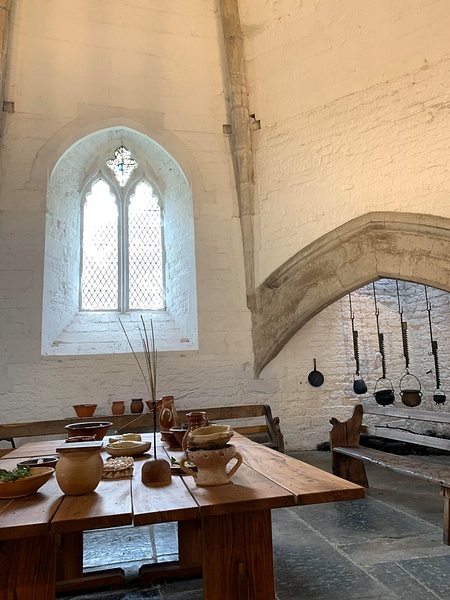
The rest of the Great Church is the main attraction of the site. Much of the main nave has disappeared, but the pillars in the entrance to the high altar are still standing, and one can only imagine how majestic the church might have looked before its gradual destruction. Today's ruins create the perfect romantic and mystic atmosphere, which makes you want to stand and marvel for as long as possible. There is also a perfectly situated bench that gives you a view of the ruin from the high altar and Arthur's second burial site. On your way out, do not forget to visit the Holy Thorn and St. Patrick's Chapel, built c. 1500 CE and decorated with new murals and stained-glass windows.
It is recommended to participate in one of the free guided tours of the grounds which are regularly given by enthusiastic and knowledgeable staff. If you want to learn more about the long and fascinating history of the abbey, spend some time in the museum near the entrance where you can study artifacts found on the estate and also learn how Glastonbury has been described in different sources from varying epochs.
The Glastonbury sanctuary and the Abbey ruins are truly a special place to visit. History, legends, and mysteries are deeply interlinked as it says on a wooden cross given to the site as a gift from Queen Elizabeth II (r. 1952 CE - present): “A Christian sanctuary, so ancient that only legends can record its origins.”
Wells
You should also visit the charming Wells, known as England's smallest city. Wells is categorized as a city due to its magnificent cathedral, which is one of the main attractions in this town that can be reached from Glastonbury by a 15-minute bus ride. Visit on Wednesdays or Saturdays when there is an outdoor market held in an open square in the center of the city.
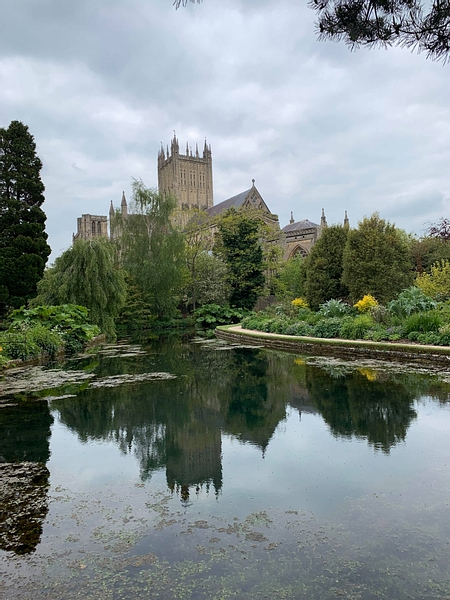
Wells is a small city, but there are lots of sights to see. The first stop should be the Vicars' Close, the oldest continuously occupied medieval street in Europe. The residences were built in the 14th century CE on the orders of Bishop Ralph of Shrewsbury (d. 1363) and were meant to provide communal accommodation for the Vicars Choral. The Vicars Choral has existed since c. 1100 CE and is still connected to the cathedral where they sing at the daily services. The Vicars' Close is a very picturesque little site where the heritage of centuries is alive and thriving.
Next up is a visit to the cathedral, which brings Wells its glory. The site is believed to have been celebrated as a sacred site for millennia, even before a church was constructed. It was the pools or wells that later gave the town its name and they were considered to be holy springs. British tribes most likely had a connection to these wells, but the earliest archaeological evidence dates from Roman Britain.
The first church, known as the Minster Church of St Andrew, was constructed next to the wells in 705 CE on the orders of King Ine of Wessex (688-726 CE). In 909 CE, Wells became the seat of the diocese for Somerset, known today as the diocese of Bath and Wells.
The construction of the magnificent Early English Gothic style cathedral you can visit today started during the 12th century CE. The west front is known for being especially beautiful, and it is worth sitting down for a while on the lawn in front of the church to study the delicate masonry work before going inside.
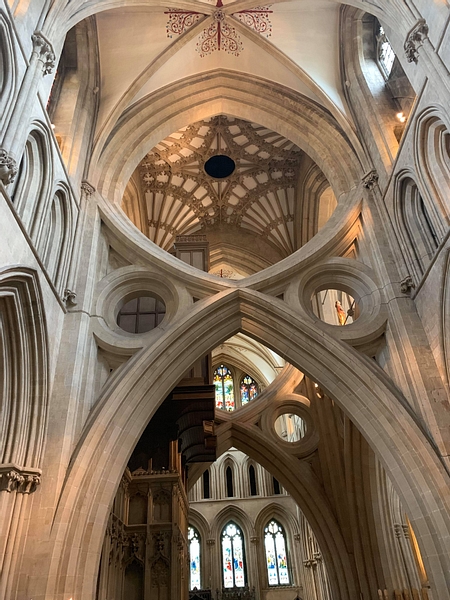
Lastly, no one should leave Wells without visiting the Bishop's Palace. Built to accommodate the bishop of the cathedral around 800 years ago, this site will take any visitor's breath away with its medieval buildings and ruins, beautiful gardens, charming little chapel, and of course, the great moat with the entrance gatehouse. Much of the palace is still standing and can be visited. You can also study objects from Wells' long history and the portraits and belongings of several of the bishops who have inhabited the palace through the centuries.
The Great Hall, which was built around 1275 CE, is mostly a ruin but was turned into a picturesque, romantic garden in 1820 CE. There are many other gardens to explore on the estate, and it is easy to lose track of time wandering around in what feels like the setting of a medieval fairytale. In the Bishop's Palace gardens, you can also visit the actual wells that are the source of the city's establishment, long history, and of course its name.

